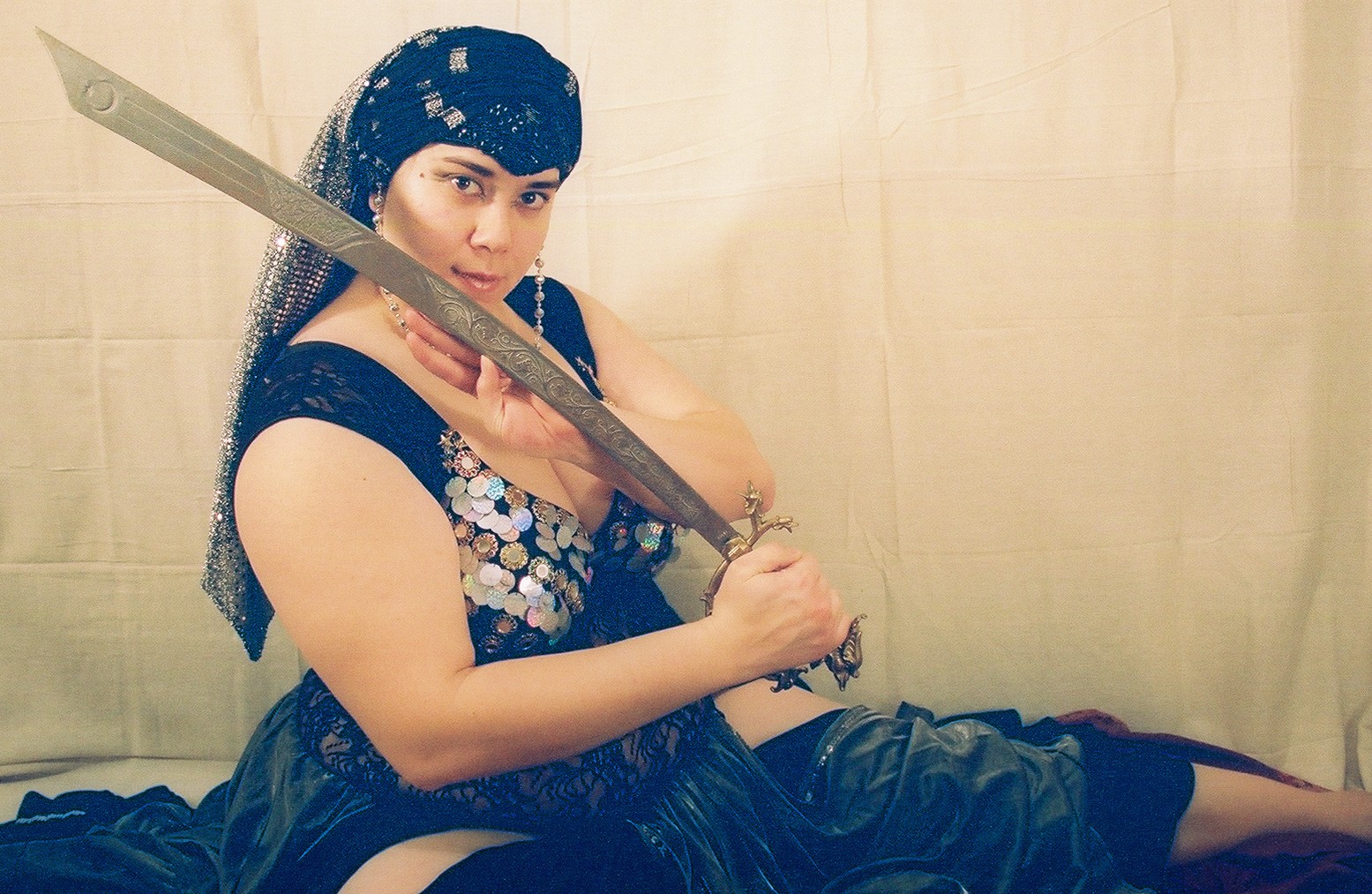Bellydancing – July 2004
Art
“I like to have ideas of dance combinations for a performance, and then find ways to get there while I am dancing,” she says. If you are watching, you get to go there with her.If there is such a thing as royalty in our belly dance community, then Aja is the Crown Princess. I consider Mashara Rabia to be the reigning queen of bellydancing in this area, and Aja is her granddaughter. Aja’s belly-dance career started at the age of 2, when Mashara put on some music and had Aja dance around the living room for her. That was 24 years ago, and Aja is still performing, teaching and loving dance as much as ever. Aja moves with the grace and confidence of someone who lives her art. She commands the stage with a sweet intention and mesmerizes her audiences with her technique, personality and her commitment to the movement.
For Aja, dance was and is a way of life. She grew up listening to all of George Abdo‘s recordings and dancing to them around the house. Drumming sessions and performing with her grandmother were as natural as breathing. Always the student, she has attended many of the workshops offered across the Wasatch Front, studied independently, and, of course, taken all those lessons with Mashara. “Dancing with Mashara,” laughs Aja, “was so much fun because you never knew what she was going to do next, and you always found yourself in places you didn’t expect to go.”
Her favorite dancers, besides Mashara, are Amaya and both of the Azizas. “Amaya is my favorite because she is so full of life and personality, and she is earthy and grounded!” she says. “I think Amaya is like me. If she couldn”t dance, she couldn’t live. I can’t imagine a life without dancing.”
Aja has her own school of dance and teaches classic American-style bellydancing, a style that emerged in America in the early 70s, and includes dancing with swords, canes, veils (she is famous for her double-veil work.) and zills. She has classes from beginning to advanced, and is the director of the troupe Dancers of the Endless Spring. She choreographs dances for her students, her troupe and herself, and is now teaching her students to drum.
“Drumming,” she explains, “provides depth to dancing and improvisational work. Sometimes it is hard to transition from choreographed pieces to improvisational dance. If you are familiar with the rhythms, you can anticipate what is coming next and it is easier.”
Aja is a paradox because she has been in the belly-dance community for 24 years and she is so young. She has vision and insight way beyond her 27 years. Her vision for the future of Middle Eastern Dance is to find creative ways to inspire people to discover themselves through dance. She wants to create dance so exciting, beautiful and energetic that the public will be compelled to watch and inspired to dance. “We need to respect our audience,” she explains, “and become a bridge. Middle Eastern dance still has a mysterious, exotic quality, and we [the performers] need to be a bridge from the mundane to the exotic. We need to work hard and be unmistakably fabulous.”

